Hang Zhu
VAPO: Efficient and Reliable Reinforcement Learning for Advanced Reasoning Tasks
Apr 08, 2025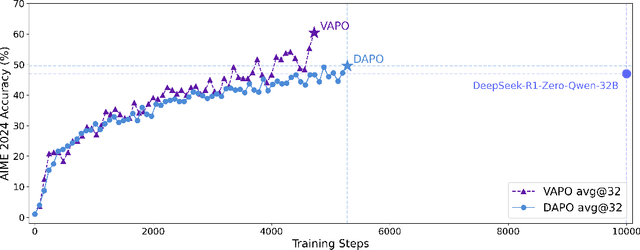
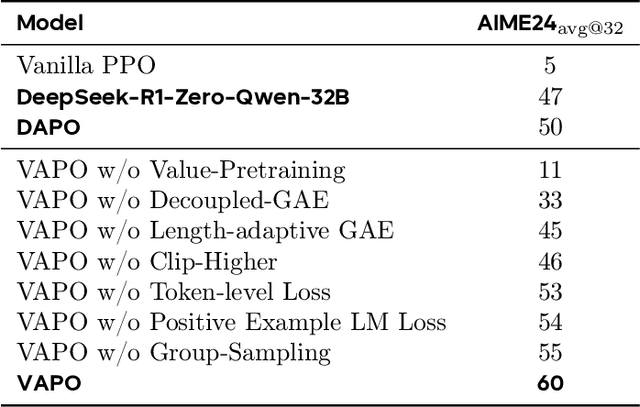
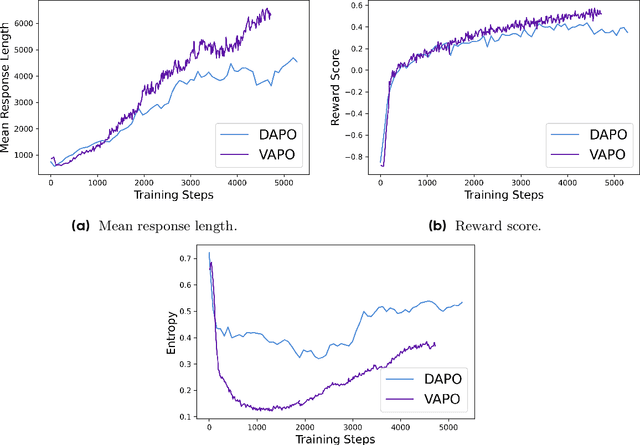
Abstract:We present VAPO, Value-based Augmented Proximal Policy Optimization framework for reasoning models., a novel framework tailored for reasoning models within the value-based paradigm. Benchmarked the AIME 2024 dataset, VAPO, built on the Qwen 32B pre-trained model, attains a state-of-the-art score of $\mathbf{60.4}$. In direct comparison under identical experimental settings, VAPO outperforms the previously reported results of DeepSeek-R1-Zero-Qwen-32B and DAPO by more than 10 points. The training process of VAPO stands out for its stability and efficiency. It reaches state-of-the-art performance within a mere 5,000 steps. Moreover, across multiple independent runs, no training crashes occur, underscoring its reliability. This research delves into long chain-of-thought (long-CoT) reasoning using a value-based reinforcement learning framework. We pinpoint three key challenges that plague value-based methods: value model bias, the presence of heterogeneous sequence lengths, and the sparsity of reward signals. Through systematic design, VAPO offers an integrated solution that effectively alleviates these challenges, enabling enhanced performance in long-CoT reasoning tasks.
DAPO: An Open-Source LLM Reinforcement Learning System at Scale
Mar 18, 2025Abstract:Inference scaling empowers LLMs with unprecedented reasoning ability, with reinforcement learning as the core technique to elicit complex reasoning. However, key technical details of state-of-the-art reasoning LLMs are concealed (such as in OpenAI o1 blog and DeepSeek R1 technical report), thus the community still struggles to reproduce their RL training results. We propose the $\textbf{D}$ecoupled Clip and $\textbf{D}$ynamic s$\textbf{A}$mpling $\textbf{P}$olicy $\textbf{O}$ptimization ($\textbf{DAPO}$) algorithm, and fully open-source a state-of-the-art large-scale RL system that achieves 50 points on AIME 2024 using Qwen2.5-32B base model. Unlike previous works that withhold training details, we introduce four key techniques of our algorithm that make large-scale LLM RL a success. In addition, we open-source our training code, which is built on the verl framework, along with a carefully curated and processed dataset. These components of our open-source system enhance reproducibility and support future research in large-scale LLM RL.
ContextModule: Improving Code Completion via Repository-level Contextual Information
Dec 11, 2024Abstract:Large Language Models (LLMs) have demonstrated impressive capabilities in code completion tasks, where they assist developers by predicting and generating new code in real-time. However, existing LLM-based code completion systems primarily rely on the immediate context of the file being edited, often missing valuable repository-level information, user behaviour and edit history that could improve suggestion accuracy. Additionally, challenges such as efficiently retrieving relevant code snippets from large repositories, incorporating user behavior, and balancing accuracy with low-latency requirements in production environments remain unresolved. In this paper, we propose ContextModule, a framework designed to enhance LLM-based code completion by retrieving and integrating three types of contextual information from the repository: user behavior-based code, similar code snippets, and critical symbol definitions. By capturing user interactions across files and leveraging repository-wide static analysis, ContextModule improves the relevance and precision of generated code. We implement performance optimizations, such as index caching, to ensure the system meets the latency constraints of real-world coding environments. Experimental results and industrial practise demonstrate that ContextModule significantly improves code completion accuracy and user acceptance rates.
Minder: Faulty Machine Detection for Large-scale Distributed Model Training
Nov 04, 2024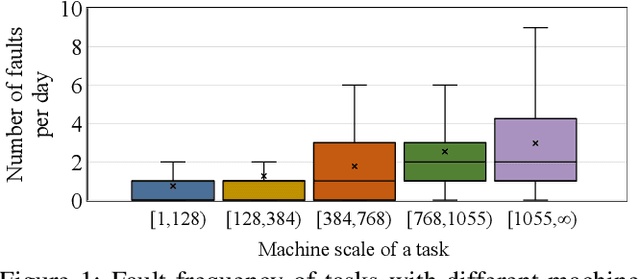
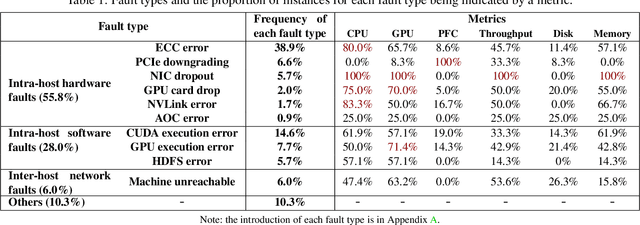
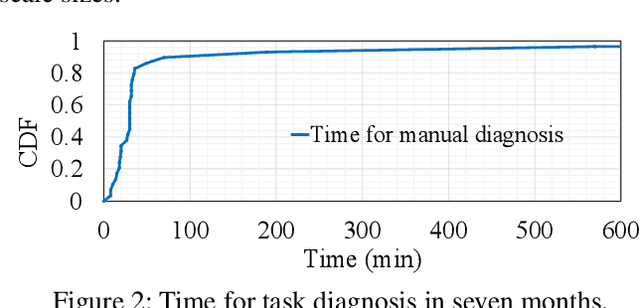
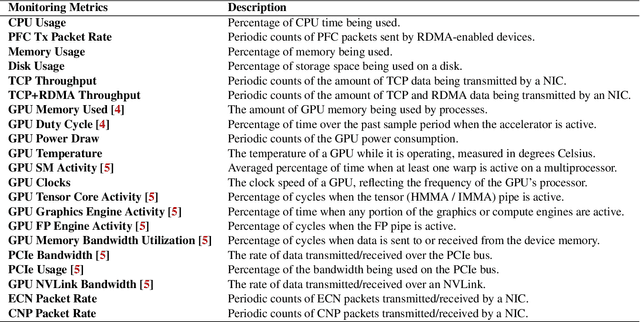
Abstract:Large-scale distributed model training requires simultaneous training on up to thousands of machines. Faulty machine detection is critical when an unexpected fault occurs in a machine. From our experience, a training task can encounter two faults per day on average, possibly leading to a halt for hours. To address the drawbacks of the time-consuming and labor-intensive manual scrutiny, we propose Minder, an automatic faulty machine detector for distributed training tasks. The key idea of Minder is to automatically and efficiently detect faulty distinctive monitoring metric patterns, which could last for a period before the entire training task comes to a halt. Minder has been deployed in our production environment for over one year, monitoring daily distributed training tasks where each involves up to thousands of machines. In our real-world fault detection scenarios, Minder can accurately and efficiently react to faults within 3.6 seconds on average, with a precision of 0.904 and F1-score of 0.893.
Feature matching in Ultrasound images
Oct 23, 2020
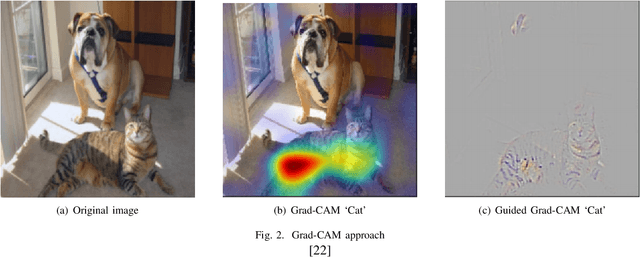
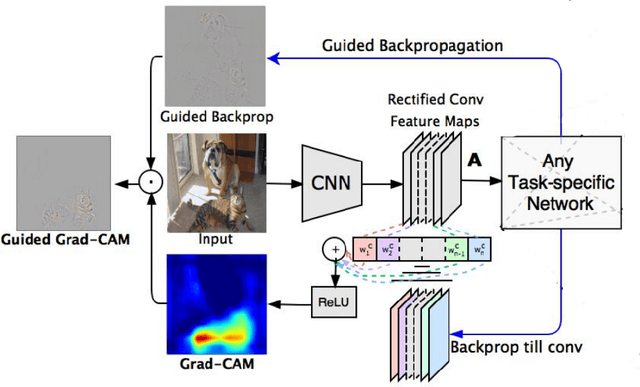
Abstract:Feature matching is an important technique to identify a single object in different images. It helps machines to construct recognition of a specific object from multiple perspectives. For years, feature matching has been commonly used in various computer vision applications, like traffic surveillance, self-driving, and other systems. With the arise of Computer-Aided Diagnosis(CAD), the need for feature matching techniques also emerges in the medical imaging field. In this paper, we present a deep learning-based method specially for ultrasound images. It will be examined against existing methods that have outstanding results on regular images. As the ultrasound images are different from regular images in many fields like texture, noise type, and dimension, traditional methods will be evaluated and optimized to be applied to ultrasound images.
Two-phase Hair Image Synthesis by Self-Enhancing Generative Model
Feb 28, 2019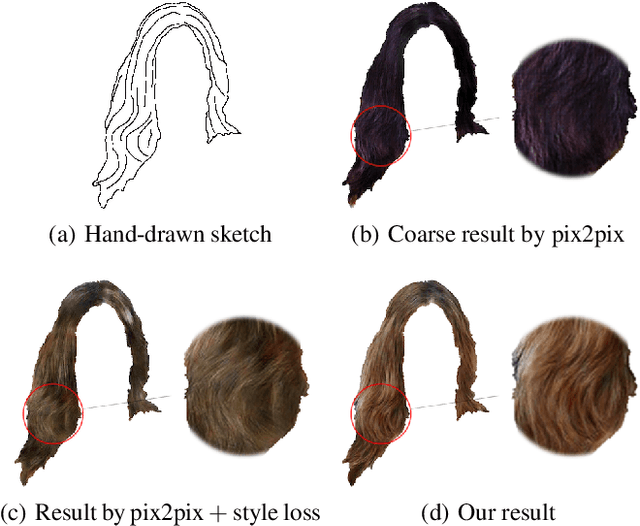



Abstract:Generating plausible hair image given limited guidance, such as sparse sketches or low-resolution image, has been made possible with the rise of Generative Adversarial Networks (GANs). Traditional image-to-image translation networks can generate recognizable results, but finer textures are usually lost and blur artifacts commonly exist. In this paper, we propose a two-phase generative model for high-quality hair image synthesis. The two-phase pipeline first generates a coarse image by an existing image translation model, then applies a re-generating network with self-enhancing capability to the coarse image. The self-enhancing capability is achieved by a proposed structure extraction layer, which extracts the texture and orientation map from a hair image. Extensive experiments on two tasks, Sketch2Hair and Hair Super-Resolution, demonstrate that our approach is able to synthesize plausible hair image with finer details, and outperforms the state-of-the-art.
Neural Packet Classification
Feb 27, 2019

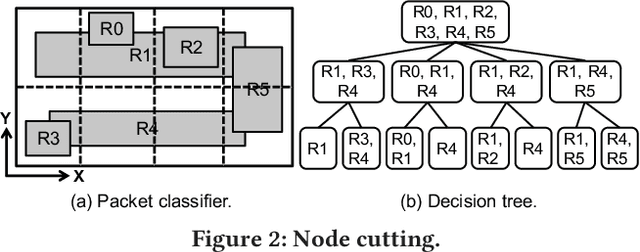
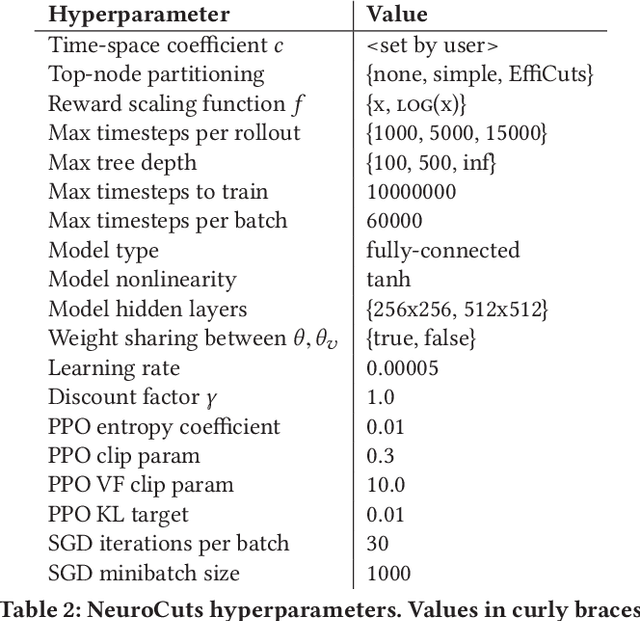
Abstract:Packet classification is a fundamental problem in computer networking. This problem exposes a hard tradeoff between the computation and state complexity, which makes it particularly challenging. To navigate this tradeoff, existing solutions rely on complex hand-tuned heuristics, which are brittle and hard to optimize. In this paper, we propose a deep reinforcement learning (RL) approach to solve the packet classification problem. There are several characteristics that make this problem a good fit for Deep RL. First, many of the existing solutions are iteratively building a decision tree by splitting nodes in the tree. Second, the effects of these actions (e.g., splitting nodes) can only be evaluated once we are done with building the tree. These two characteristics are naturally captured by the ability of RL to take actions that have sparse and delayed rewards. Third, it is computationally efficient to generate data traces and evaluate decision trees, which alleviate the notoriously high sample complexity problem of Deep RL algorithms. Our solution, NeuroCuts, uses succinct representations to encode state and action space, and efficiently explore candidate decision trees to optimize for a global objective. It produces compact decision trees optimized for a specific set of rules and a given performance metric, such as classification time, memory footprint, or a combination of the two. Evaluation on ClassBench shows that NeuroCuts outperforms existing hand-crafted algorithms in classification time by 18% at the median, and reduces both time and memory footprint by up to 3x.
 Add to Chrome
Add to Chrome Add to Firefox
Add to Firefox Add to Edge
Add to Edge